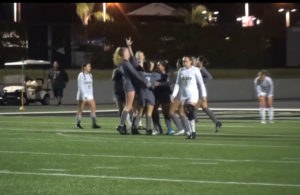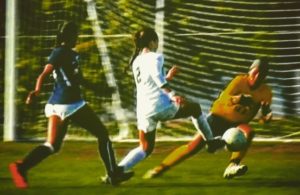- 2019/2020 Recap: Lady Scots Conquer First Round of CIF!
- 2019 Recap: Justin Flowe Wins the Dick Butkus Award
- Upland Lady Scots Have Their Revenge
- What is BBCOR?
- Tommy John, A Name To Be Feared
- The Game Plan
- Too Much Tackle?
- Is Cheer A Sport?
- Transgender Inclusion in Youth Sports
- Are You Counting Sheep Right?
Too Much Tackle?
- Updated: October 15, 2019
A controversial bill is currently being proposed in California that would set a minimum age throughout the state for children to participate in tackle football. The proposed bill, dubbed the “Safe Youth Football Act”, would prevent kids from playing tackle football below the age of 12.
This particular bill was authored by assembly member Kevin McCarty (D-Sacramento) and has been endorsed by assembly member Lorena Gonzalez Fletcher (D-San Diego).
This bill is not the first of its kind that has been seen around the country. For instance, New York, Maryland, and Illinois have also proposed similar versions of the bill that would limit tackle football among youth.
Though some supporters of traditional tackle football may view this bill as an excessive attack on tackle football, supporters of the bill feel this is a way to protect the wellbeing of future tackle football players.
“The Super Bowl may be over, but the risk of brain injury to kids who play tackle football remains,” McCarty said. “We have an obligation to protect children from dangerous, long-term injuries resulting from tackle football, especially brain trauma.”
Head injuries have been synonymous with tackle football for years and have gained an even bigger spotlight due to various player safety changes in the NFL.
After denying that players in their league are at a higher risk of obtaining head injuries than non players, the NFL has admitted the opposite in recent years. NFL players are at a higher risk of experiencing head injuries that could lead to conditions later in life such as CTE.
Chronic Traumatic Encephalopathy, better known as CTE, is a deteriorating condition that affects the brain which is caused by repeated head trauma that is common in tackle football. Helmet to helmet hits, helmet to surface hits, and blindside hits are some of the causes of head trauma that appear in tackle football.
Dr. Bennet Omalu, who was depicted by actor Will Smith in the 2015 film Concussion, was the first to discover and publish to the public the link between CTE in NFL players. Omalu is also a critic of football among youths.
“If you play football, and if your child plays football, there is a 100 percent risk exposure,” Omalu said during a New York Press Club talk. “There is nothing like making football safer. That’s a misnomer.”
CTE usually appears in the early thirties of a person and can change the mood and behavior of individuals suffering from it. As CTE progresses, memory loss, dementia, and behavioral problems are some of the symptoms a CTE patient will encounter.
Researchers from Boston University’s Chronic Traumatic Encephalopathy Center have also discovered that children who regularly play tackle football before they reach the age of 12 are putting their brains at risk.
“This is just more evidence suggesting that your later-life behavior, particularly when it comes to cognitive and mood issues, could be adversely affected by brain trauma early in life,” Dr. Robert Cantu, a professor of neurology at BU and a leading expert on head trauma said. “If you have to take hits to the head at all, you’re better off taking them at later ages.”
To prevent the risk of head trauma, the NFL has adopted new policies to ensure the safety of their players now and in the future. Team doctors administering concussion test on sidelines to players who have taken big hits, not allowing players to lead with their helmets/crown when tackling, and adopting state of the arc helmets that absorb the shock of a big blow are some newer safety precautions the NFL has undertaken.
Some youth tackle football leagues have adopted similar safety measures such as these.
USA Football adopted a new safety policy called Heads Up Football, which originated from three safety programs in 2012. Heads Up Football stresses the importance of USA certified coaches who have been trained in player safety, concussion recognition and response, heat preparedness and hydration, proper equipment that fits, and the core principles of proper tackling which is the shoulder tackle.
Detractors of the bill think this is more than enough to prevent head trauma among kids rather than banning tackle football.
“I am against it (the bill) because I feel like that when are you going to learn, you are going to learn when there are standards set on youth football,” former NFL player Chris Hale said.
Hale, who was a member of the Buffalo Bills from 1989-1992 and part of the Denver Broncos organization in 1993, is an advocate of youth tackle football because it teaches kids the nuances of the game, such as proper tackling before they reach high school which they cannot experience in flag football.
“When you’re a small child playing football or starting out in football, there (should be) an age or weight limit. That’s time to learn football. Plus the physicality of the kids makes a difference,” Hale said. “I would actually like kids to learn from a very young age, from nine or ten years old, from the age where weight can match up. Then they’ll understand well enough whether they want to actually play this game.”
With this in mind, Hale expresses the importance of coaching. Hale believes that a coach who has a background in football is necessary in order to teach their players the proper and safe way to tackle.
“That’s the number one thing for all of them (players), being taught how to tackle or taught how to bring people down,” Hale said. “There should be a special class for all coaches who want to coach youth football. They (the players) should actually be out there understanding from some professional how this is done, how to take down people, (and) how not to get hurt.”
If coaches are educated in proper tackling techniques and other safety measures, Hale believes there is no reason to ban youth tackle football. He would even recommend tackle football to an unsure parent.
“Absolutely, you can let him (your son) play,” Hale said. “Make sure you have the proper coaches, make sure you take the proper precautions in playing, (and) make sure that he wants to go out there with other kids and hit other kids.”
Copyright © 2023 KSNN. All rights reserved.








